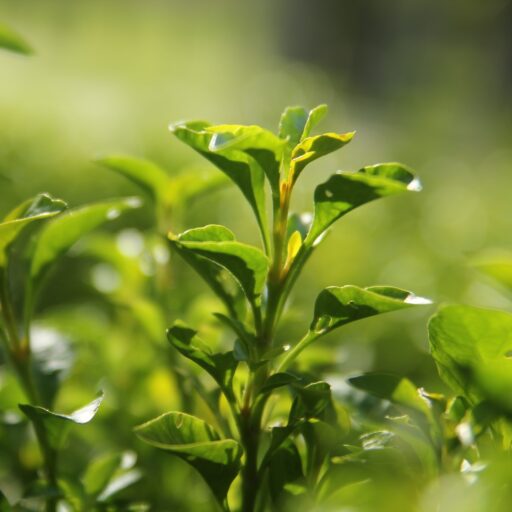Support our educational content for free when you purchase through links on our site. Learn more
Mastering Tea Plant Propagation by Cuttings: 7 Expert Steps 🌱 (2025)
Have you ever wondered how tea farmers replicate their prized Camellia sinensis bushes to ensure every cup tastes just right? Spoiler alert: it’s not by planting random seeds! At Growing Teas™, we’ve spent years perfecting the art of tea plant propagation by cuttings—a method that guarantees your new plants are genetic clones of your favorite tea bushes. This guide spills all the secrets, from choosing the perfect mother plant to nurturing your cuttings into thriving tea shrubs.
Did you know that tea cuttings can take anywhere from 4 months to over a year to root fully? But don’t let that discourage you! We’ll walk you through every step, including insider tips on rooting hormones, humidity control, and troubleshooting common problems. Plus, we’ll share our personal stories and tried-and-true techniques that have helped us grow some of the finest tea plants around. Ready to grow your own tea legacy? Let’s dive in!
Key Takeaways
- Select healthy, semi-hardwood cuttings from a vigorous mother plant for the best results.
- Use rooting hormone to dramatically increase your success rate and speed up root development.
- Maintain high humidity and indirect light during propagation to keep cuttings alive and thriving.
- Patience is essential: tea cuttings can take 4 to 15 months to develop strong roots.
- Troubleshoot common issues like root rot, dehydration, and fungal infections early to save your cuttings.
- Hardening off young plants gradually ensures a smooth transition to outdoor growth and long-term success.
Ready to start? Keep reading to unlock every step and secret to tea plant propagation by cuttings!
Table of Contents
- ⚡️ Quick Tips and Facts: Your Fast Track to Tea Plant Propagation Success!
- 🌱 The Ancient Art of Tea Cultivation: A Brief History of Camellia sinensis Propagation
- Why Cuttings? Unlocking the Genetic Secrets of Your Favorite Tea Bush
- 1. Choosing Your Champion: Selecting the Perfect Mother Plant for Tea Cuttings
- 2. The Art of the Snip: How to Take Healthy Camellia sinensis Cuttings
- 3. Rooting for Success: Preparing Your Tea Cuttings for Their New Life
- 4. Planting Your Future: How to Pot Your Tea Cuttings for Optimal Growth
- 5. The Nursery Nurture: Creating the Ideal Environment for Rooting Tea Plants
- 6. The Waiting Game: What to Expect During the Rooting Process (and How to Spot Success!)
- 7. From Cutting to Bush: Hardening Off and Transplanting Your Young Tea Plants
- 🚨 Troubleshooting Tea Cuttings: Common Pitfalls and How to Save Your Saplings
- 🌿 Beyond Cuttings: Exploring Other Tea Plant Propagation Methods (Seeds vs. Grafting)
- 💚 The Growing Teas™ Advantage: Our Personal Journey with Tea Plant Propagation
- ✅ Conclusion: Your Green Thumb, Our Tea Legacy
- 🔗 Recommended Links: Dive Deeper into Tea Cultivation
- ❓ FAQ: Your Most Pressing Tea Propagation Questions Answered!
- 📚 Reference Links: Credible Sources for Your Tea Growing Journey
Here is the main body of the article, “Tea Plant Propagation by Cuttings”.
⚡️ Quick Tips and Facts: Your Fast Track to Tea Plant Propagation Success!
Welcome, fellow tea enthusiasts! You’re about to embark on one of the most rewarding journeys a tea lover can take: propagating your very own Camellia sinensis plants. Here at Growing Teas™, we’ve cloned thousands of tea bushes, and we’re spilling the tea on how you can do it too. Before we dive deep, here’s a quick brew of the essential info:
| Factor | Quick Tip |
|---|---|
| 🌿 Best Cuttings | Select healthy, semi-hardwood stems from a mature, high-performing plant. Look for deep green foliage! |
| ⏰ Ideal Timing | Take your cuttings in mid-October, when the plant’s energy is focused on maturation. |
| ✂️ The Perfect Cut | Use sterilized pruning shears to take a 6-inch cutting just below where the stem turns from green to brown. |
| 🌱 Rooting Medium | A 50/50 mix of peat moss and perlite is a great option, but even a simple 50/50 blend of basic dirt and playground sand can work wonders. |
| 🧪 Rooting Hormone | Don’t skip this! Dipping the cut end in a rooting hormone like Clonex or Garden Safe is considered a “must for successful propagation.” |
| 💧 Humidity is Key | Create a mini-greenhouse with a plastic bag or dome to keep the cutting moist and happy. |
| ⏳ Patience is a Virtue | This is a marathon, not a sprint! Roots can take anywhere from a few months to over a year to develop. Don’t give up! |
🌱 The Ancient Art of Tea Cultivation: A Brief History of Camellia sinensis Propagation
Before you snip your first cutting, let’s take a moment to appreciate the legacy you’re joining. For thousands of years, tea has been cultivated across the globe. While growing tea from seed is possible, it’s a genetic lottery—you never know what you’ll get! This is why ancient growers perfected the art of vegetative propagation. By taking cuttings, they could replicate their most prized tea bushes, ensuring that the unique flavors and characteristics of a particular plant were preserved for generations. This technique is the secret behind the consistent quality of the world’s most famous teas. It’s a cornerstone of our Green Tea Cultivation practices and a tradition we’re thrilled to share with you.
Why Cuttings? Unlocking the Genetic Secrets of Your Favorite Tea Bush
So, why all the fuss about cuttings? Why not just plant a seed? As the expert growers at Zealong, a renowned tea estate in New Zealand, will tell you, it’s all about consistency.
- ✅ Genetic Clones: When you take a cutting, you are essentially creating a genetic clone of the parent plant. This means the new plant will have the exact same DNA, leading to the same leaf size, growth habit, and, most importantly, the same flavor profile in your cup. This is crucial for ensuring “consistency in taste and quality.”
- ❌ The Seed Gamble: A plant grown from a seed is a genetic mix of its two parents. It might be great, or it might be a dud. For anyone serious about cultivating a specific type of tea, seeds are too unpredictable and “would not ensure a consistent crop.”
- ✅ Faster Harvest: While it’s not an instant process, a plant grown from a cutting will typically mature and be ready for its first harvest faster than one grown from seed.
By choosing to propagate via cuttings, you’re not just growing a plant; you’re preserving a specific genetic lineage, a flavor, a piece of tea history. It’s the ultimate form of quality control for the home grower!
1. Choosing Your Champion: Selecting the Perfect Mother Plant for Tea Cuttings
Your new tea plants will only be as good as the one they came from. This is the most critical first step! Don’t just grab a cutting from any old bush.
We always look for our “champions”—the plants that have thrived all year. As noted in this helpful video on tea propagation, you should select “more mature and healthier plants that have done well this year.”
What to look for:
- Vibrant Color: Look for a deep, rich green color, which indicates a healthy, well-nourished plant.
- Lush Foliage: A plant with dense, abundant leaves is a sign of strong genetics and vigor.
- Disease and Pest Free: Meticulously inspect the leaves and stems. Avoid any plant with signs of yellowing, spots, insect damage, or fungal growth. This is a key principle in all Organic Farming Techniques.
Think of it like this: you’re choosing the star athlete to mentor the next generation. Pick the strongest, healthiest, and most beautiful plant in your collection!
2. The Art of the Snip: How to Take Healthy Camellia sinensis Cuttings
Got your champion plant picked out? Excellent! Now, let’s get snipping. How you take the cutting is just as important as which plant you take it from.
⏰ Timing is Everything: When to Harvest Your Tea Plant Cuttings for Optimal Rooting
You can try to take cuttings at other times, but for the best results, timing is crucial. We, and other experienced growers, have found that mid-October is the sweet spot. At this time of year, the plant has finished its vigorous summer growth and is beginning to harden off for the winter. The stems are in a “semi-hardwood” state—not too soft and flimsy, but not yet tough and woody. This is the perfect stage for encouraging root growth.
✂️ Tools of the Trade: Essential Gear for Clean and Successful Cuts
You don’t need a fancy lab, but you do need the right tools. A clean cut is a healthy cut.
- Pruning Shears: A sharp, clean pair of bypass pruning shears is your best friend. We love the reliability of brands like Fiskars or Felco.
- Sterilizing Agent: This is non-negotiable. Always sterilize your shears with rubbing alcohol before you make a single cut. This prevents the transfer of diseases from one plant to another, a simple step that can save you a world of heartache later.
How to make the cut:
- Identify a healthy stem.
- Follow the green, actively growing part of the stem down until you see it begin to turn brown and woody.
- Make your cut “just underneath where it turns brown.”
- Aim for a total cutting length of about 6 inches.
3. Rooting for Success: Preparing Your Tea Cuttings for Their New Life
You have your cuttings! Now, we need to prep them for their new life as independent plants. This stage is all about reducing stress on the cutting and maximizing its ability to grow roots.
- Strip the Bottom Leaves: Gently remove the leaves from the bottom two-thirds of the cutting. This is where the new roots will form, and leaving them on would just encourage rot.
- Snip the Top Leaves: A whole leaf is too much for a rootless cutting to support. It will lose water through the leaf faster than it can absorb it. To solve this, cut the remaining top leaves in half horizontally. This simple trick dramatically reduces water loss (transpiration) and helps the cutting conserve energy for root production. Some growers even recommend leaving only a single leaf per cutting, as “you don’t need multiple leaves, in fact, that’s not a good thing.”
🧪 The Rooting Hormone Debate: To Dip or Not to Dip?
Is rooting hormone really necessary? In our experience, and the experience of many others, the answer is a resounding YES. One home grower stated it perfectly: “rooting hormone is a must for successful propagation.”
Rooting hormones contain auxins, which are plant hormones that stimulate root growth. While a tea cutting can root without it, using a hormone powder or gel dramatically increases your success rate and speeds up the process.
Our Go-To Rooting Hormones:
- Clonex Rooting Gel: A popular gel that seals the cut tissue and provides hormones and vitamins.
- Garden Safe TakeRoot Rooting Hormone: A reliable and widely available powder.
Simply dip the bottom inch of your prepared cutting into the powder or gel, tapping off any excess.
👉 Shop Rooting Hormones on:
🏡 Crafting the Perfect Home: Ideal Propagation Mediums for Tea Cuttings
Your cuttings need a rooting medium that is sterile, airy, and holds moisture without becoming waterlogged. You have a few great options:
- The Professional Mix: A mixture of perlite and peat moss is a classic choice used by many growers. It provides excellent aeration and moisture retention.
- The Simple & Effective Mix: Don’t have fancy materials? No problem. A 50/50 mix of “basic dirt mixed 50-50 with playground sand” has also been shown to be effective. The key is drainage!
- Other Options: Vermiculite, coco coir, or specialized seed starting mixes can also work well.
The goal is to give the new roots a low-resistance, moist, and stable environment to grow into.
4. Planting Your Future: How to Pot Your Tea Cuttings for Optimal Growth
With your cuttings prepped and your medium mixed, it’s time to plant!
- Choose Your Pots: Small, 2-4 inch pots are perfect. Ensure they have drainage holes.
- Fill ‘er Up: Fill the pots with your chosen rooting medium and water it thoroughly, allowing excess water to drain away.
- Make a Hole: Use a pencil or a dibber to make a hole in the medium. This prevents the rooting hormone from being scraped off when you insert the cutting.
- Plant the Cutting: Insert the cutting into the hole at approximately a 45-degree angle. This angle can help encourage rooting along the stem.
- Firm It In: Gently pack the soil tightly around the cutting to ensure good contact. This removes air pockets and stabilizes the cutting.
And that’s it! Your cuttings are planted. But what comes next is perhaps the most crucial part of the entire process…
5. The Nursery Nurture: Creating the Ideal Environment for Rooting Tea Plants
Your little cuttings are like premature babies in an incubator. They have no roots to absorb water, so they are incredibly vulnerable. Our job is to create a perfect, high-humidity, stable environment to keep them alive while they work on growing a root system.
💧 Humidity Havens: The Magic of Domes and Misting for Camellia sinensis Cuttings
The number one enemy of a new cutting is dehydration. The secret to success is maintaining high humidity.
- Create a Mini-Greenhouse: The easiest way to do this is to cover the pots with a clear plastic bag or a clear plastic dome. This traps moisture and creates the humid microclimate your cuttings crave. You can buy purpose-made propagation domes or just use a recycled plastic bottle or food container.
- Use a Cold Frame: For larger batches, a cold frame is an excellent option. You can even build a simple one from wood and a recycled storm door to house your pots.
- Mist Regularly: Check your cuttings daily. If the inside of the dome isn’t covered in condensation, it’s time to mist. Use a spray bottle with clean water to lightly mist the leaves and the soil surface. Remember, the goal is “cuttings are kept moist at all times.”
☀️ Light, Temperature, and Airflow: Balancing the Elements for Root Development
- Light: Place your setup in a bright location but out of direct sunlight. Direct sun will cook your cuttings in their humid little homes. A north-facing windowsill or a spot under grow lights is ideal.
- Temperature: Tea cuttings root best in stable, warm temperatures. Aim for a consistent room temperature between 65-75°F (18-24°C). A heat mat can be used to gently warm the soil and encourage faster rooting, but it’s not strictly necessary.
- Airflow: While high humidity is essential, stagnant air can encourage fungal diseases. Once or twice a day, briefly remove the dome or bag to allow for some fresh air exchange.
6. The Waiting Game: What to Expect During the Rooting Process (and How to Spot Success!)
Here’s where we need to have a little chat about patience. Propagating tea is not an overnight success story. It requires you to “be patient; it takes time for tea plants to root.”
So, how long does it take? This is where sources and experiences can vary quite a bit, and it’s important to understand why.
- The Optimistic Timeline: Some growers report seeing roots form in as little as “approximately 4 months.” This is possible under absolutely ideal conditions with a very vigorous plant variety.
- The Realistic Timeline: However, large-scale commercial growers like Zealong note that it can take 12–15 months for a cutting to grow a substantial root system.
Why the difference? Factors like the specific Camellia sinensis variety, the health of the mother plant, the time of year, and the conditions in your propagation setup all play a huge role.
How to check for roots:
The best way to check is to resist the urge to pull on the cutting! This can damage the delicate new roots. Instead, after a few months, gently try to lift the pot. If the cutting and soil come up as one solid plug, you have roots! You can also gently tug on a leaf; if you feel resistance, that’s a great sign that roots have anchored the plant. The ultimate sign of success is seeing new leaf growth, which indicates the plant can support itself.
7. From Cutting to Bush: Hardening Off and Transplanting Your Young Tea Plants
Congratulations, you have roots! But don’t rush to move your new plant into its final home. It has been living in a five-star, high-humidity resort and needs to be gradually acclimated to the real world. This process is called hardening off.
- Start by opening the dome/bag for an hour on the first day.
- Gradually increase the time the cover is off over the course of a week or two.
- Once the plant can handle being uncovered for a full 24 hours without wilting, it’s ready to be transplanted.
- Move it to a slightly larger pot with a good quality potting mix. Water it in well.
- Keep the newly potted plant in a sheltered, shady spot for another week before gradually introducing it to more sunlight.
This slow and steady approach minimizes transplant shock and sets your young tea plant up for a long and healthy life, where you can eventually explore fun things like DIY Tea Blending.
🚨 Troubleshooting Tea Cuttings: Common Pitfalls and How to Save Your Saplings
Even with the best care, you might run into a few issues. Don’t panic! Here’s how to handle them.
- Problem: Cuttings are turning yellow and mushy.
- Cause: Almost certainly overwatering or poor drainage. This is root rot.
- Solution: Unfortunately, a rotted cutting is usually a goner. For the remaining ones, reduce watering and ensure your medium isn’t soggy. Increase airflow.
- Problem: Cuttings are wilting, even with the dome on.
- Cause: The leaves are losing water faster than the stem can absorb it.
- Solution: Make sure your humidity is high enough. If you didn’t cut the leaves in half, it might be worth doing so now. Ensure it’s not in direct sunlight.
- Problem: White, fuzzy mold is growing on the soil or stems.
- Cause: Fungal growth due to high humidity and low airflow.
- Solution: Immediately increase ventilation by opening the dome more often. You can lightly spray with a fungicide or a diluted chamomile tea solution, which has natural anti-fungal properties.
🐛 Wilting Woes and Fungal Foes: Battling Pests and Diseases in Young Tea Cuttings
Your nursery is a tempting target for pests like fungus gnats and spider mites.
- Fungus Gnats: These tiny black flies are annoying, and their larvae can damage new roots.
- Solution: Let the top layer of soil dry out slightly between waterings. Use yellow sticky traps to catch the adults.
- Spider Mites: Look for fine webbing on the undersides of leaves.
- Solution: Isolate the affected plants. Wipe the leaves with a damp cloth or spray with an insecticidal soap like Safer Brand.
Keeping a clean environment and sterile tools from the start is your best defense against these problems.
🌿 Beyond Cuttings: Exploring Other Tea Plant Propagation Methods (Seeds vs. Grafting)
While cuttings are our preferred method for consistency, it’s good to know the other options.
- Seeds: As we mentioned, growing from seed is a genetic gamble. It takes longer, and the resulting plant’s tea quality is not guaranteed. However, it can be a fun experiment if you’re interested in potentially creating a new, unique tea variety!
- Grafting: This is an advanced technique where you join a cutting (the scion) from a plant with desirable flavor onto the rootstock of another plant that has a vigorous, resilient root system. This is often used in commercial agriculture to combine the best traits of two different plants.
For the home grower, cuttings offer the perfect balance of reliability, ease, and reward.
💚 The Growing Teas™ Advantage: Our Personal Journey with Tea Plant Propagation
We’ll never forget our first successful batch of cuttings. We’d chosen a mother plant that produced the most wonderfully aromatic leaves for our Herbal Tea Planting experiments. After months of nervous misting and daily check-ins, we saw that first tiny new leaf unfurl. It was a moment of pure magic! It wasn’t just a new plant; it was a living continuation of a plant we loved.
That’s the feeling we want you to have. There will be failures—cuttings that don’t take, moments of doubt. But when you finally sip a cup of tea grown from a plant you propagated yourself, you’ll understand the deep satisfaction that comes from being part of your tea’s journey from start to finish. It’s a connection that deepens your appreciation for the incredible Health Benefits of Tea and the plant it comes from. We believe that “anything that we can do to spread knowledge is a good thing,” and we hope this guide empowers you on your own tea-growing adventure.
✅ Conclusion: Your Green Thumb, Our Tea Legacy
Wow, what a journey! From selecting your champion tea bush to nurturing tiny cuttings into thriving plants, you now have the full toolkit to propagate Camellia sinensis by cuttings like a seasoned pro. Remember, this is a process that rewards patience and attention to detail. The key takeaways? Always choose a healthy mother plant, use clean tools, dip your cuttings in rooting hormone, and create a humid, stable environment for your cuttings to root.
While rooting tea cuttings can take anywhere from 4 months to over a year, the payoff is immense: genetically identical plants that guarantee the flavor and quality you love in your cup. Whether you’re a hobbyist or aspiring tea farmer, propagation by cuttings is your best bet for consistent, high-quality tea plants.
If you’re wondering whether to try other methods like seeds or grafting, remember that cuttings strike the perfect balance of reliability and speed for most growers. And if you ever feel stuck, revisit our troubleshooting tips or reach out to the tea-growing community—you’re never alone on this green adventure!
So, grab your shears, prepare your rooting medium, and get ready to grow your own tea legacy. We can’t wait to hear about your successes and share in the joy of every new leaf unfurled.
🔗 Recommended Links: Dive Deeper into Tea Cultivation
Ready to get your hands dirty? Here are some of our favorite products and resources to help you succeed:
-
Clonex Rooting Gel:
Amazon | Walmart | Clonex Official Website -
Garden Safe TakeRoot Rooting Hormone Powder:
Amazon | Walmart -
Felco Pruning Shears:
Amazon -
Books to Grow Your Tea Knowledge:
“The Tea Enthusiast’s Handbook” by Mary Lou Heiss & Robert J. Heiss — Amazon
“Tea: History, Terroirs, Varieties” by Kevin Gascoyne et al. — Amazon
❓ FAQ: Your Most Pressing Tea Propagation Questions Answered!
What care do tea plant cuttings need after planting to ensure growth?
After planting, tea cuttings need consistent moisture, high humidity, and indirect light. Keep the rooting medium moist but not soggy to prevent rot. Covering cuttings with a plastic dome or bag helps maintain humidity. Avoid direct sunlight, which can stress the cuttings. Also, ensure good airflow by occasionally removing covers to prevent fungal diseases. Regularly check for pests and diseases, and keep temperatures stable between 65-75°F (18-24°C).
Can tea plants be propagated by cuttings indoors?
Absolutely! Indoor propagation is common and effective, especially if you can control humidity, temperature, and light. Use grow lights or place cuttings near a bright window with indirect sunlight. Maintain high humidity with propagation domes or plastic bags. Indoor propagation allows you to avoid outdoor pests and weather fluctuations, making it ideal for beginners or those in cooler climates.
What are the common challenges in tea plant propagation by cuttings?
Common challenges include:
- Root rot from overwatering or poor drainage.
- Dehydration if humidity is too low.
- Fungal infections due to stagnant air and excessive moisture.
- Pest infestations like fungus gnats and spider mites.
- Slow or failed rooting due to poor cutting selection or improper timing.
Prevent these by using sterile tools, proper rooting medium, rooting hormone, and maintaining ideal environmental conditions.
How long does it take for tea plant cuttings to develop roots?
Root development varies widely:
- Optimistic cases: Roots visible in about 4 months.
- Typical timeline: 12–15 months for a well-established root system ready for transplanting and growth.
Factors influencing rooting time include plant variety, cutting health, propagation conditions, and season.
What type of soil is ideal for propagating tea plants from cuttings?
A well-draining, airy, and moisture-retentive medium is best. Common mixes include:
- 50/50 peat moss and perlite (professional standard).
- 50/50 basic garden soil and playground sand (effective budget option).
- Alternatives: vermiculite or coco coir mixed with sand or perlite.
Avoid heavy clay soils or anything that retains too much water.
How do you prepare tea plant cuttings for successful rooting?
Preparation steps:
- Select semi-hardwood stems about 6 inches long from a healthy mother plant.
- Remove leaves from the bottom two-thirds of the cutting.
- Cut remaining leaves in half horizontally to reduce water loss.
- Dip the cut end in rooting hormone powder or gel.
- Plant in a moist, well-draining rooting medium.
This preparation maximizes the cutting’s chance to develop roots and survive.
Can tea plants be propagated from softwood or hardwood cuttings?
Tea plants are best propagated from semi-hardwood cuttings, which are stems that are partially matured but still flexible. Softwood cuttings (very young, tender shoots) are more prone to wilting and fungal issues, while hardwood cuttings (fully mature, woody stems) root very slowly or not at all. Semi-hardwood cuttings strike the best balance for rooting success.
How do you care for tea plant cuttings after planting to ensure growth?
Post-planting care includes:
- Maintaining high humidity with domes or plastic bags.
- Keeping the rooting medium moist but not waterlogged.
- Providing bright, indirect light.
- Ensuring good airflow to prevent fungal diseases.
- Monitoring temperature around 65-75°F (18-24°C).
- Checking regularly for pests and diseases.
Gradually reduce humidity once roots develop to harden off the plants.
📚 Reference Links: Credible Sources for Your Tea Growing Journey
- My Japanese Green Tea – Propagating Tea Plants from Cuttings
- ScienceLearn NZ – Propagating Tea Plants Using Cuttings (Zealong)
- Clonex Rooting Gel Official Site
- Felco Pruning Shears Official Site
- PlantVillage – Tea | Diseases and Pests, Description, Uses, Propagation
- Zealong Tea Estate – About Tea Propagation
We hope this comprehensive guide lights up your passion for tea propagation and helps you cultivate your own thriving tea garden. Happy growing! 🌿🍵







